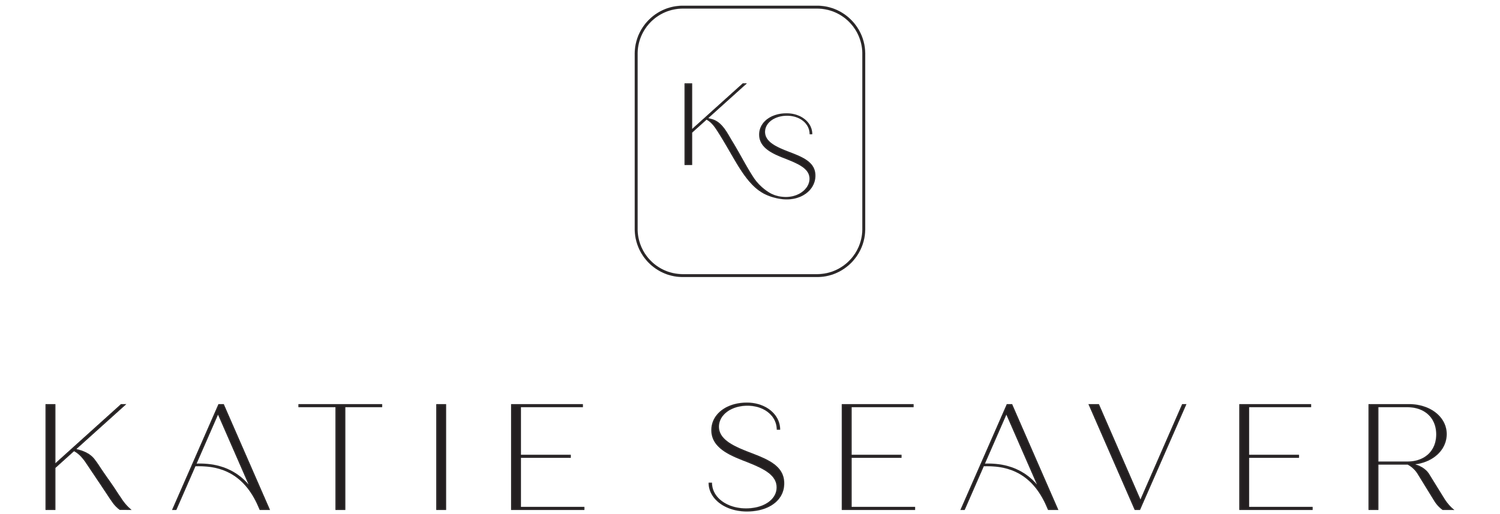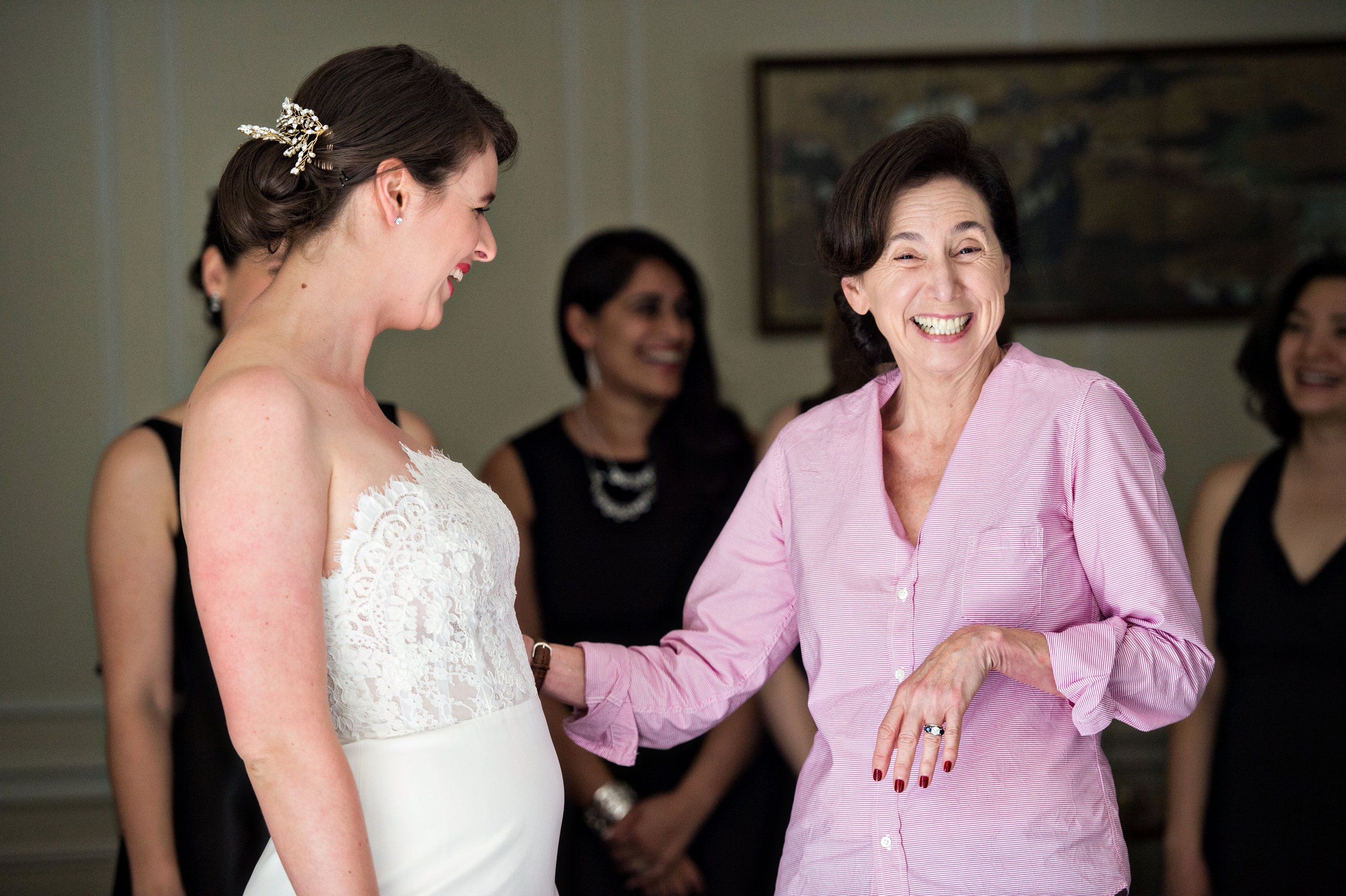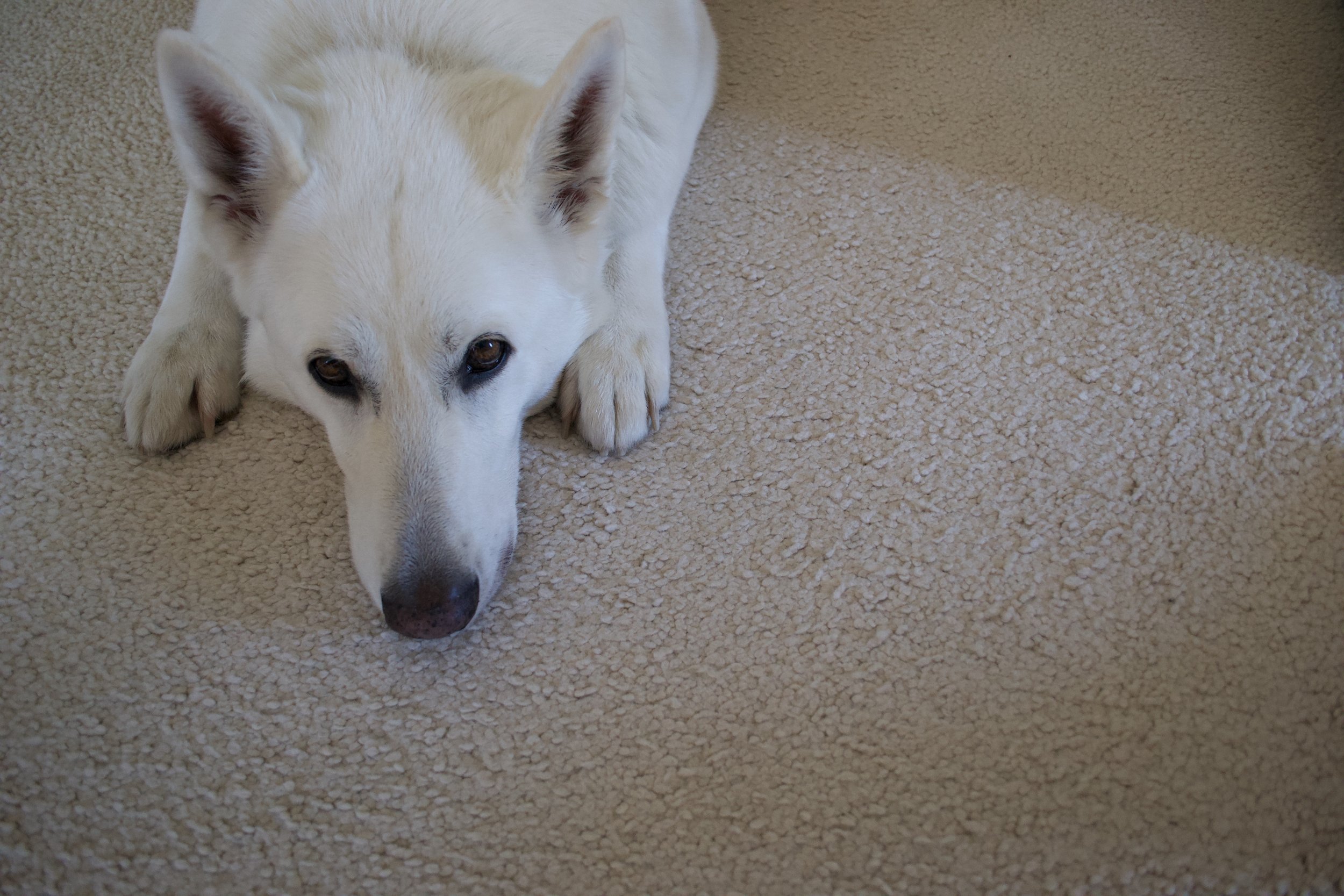Blog
One place to start on your self-improvement journey
There are times in our lives where we have the sense — perhaps clearly, or perhaps indirectly, out of the corner of our eye — that we need to do something differently. A big change is brewing in our professional or personal lives.
But at the same time, maybe it’s not time to act just yet. Maybe we aren’t sure what we want to change, or maybe we’re not 100% ready.
I have a suggestion for those times.
Here it is: Start with the obvious.
So many of us spend so much time vaguely agonizing, but not really taking action, on that big change (Should I apply to this job? Or that one? Should I go back to grad school? Should I break up with them, or try to work things out?). And that’s great.
But sometimes, we also have one or two or seven things that we know for sure we need to do in our lives. Maybe we’re deeply dissatisfied with our professional situation and need to fix that, but we also know that we would feel much better in our lives if we:
Took a walk
Didn’t spend tonight on a screen
Saw a friend
Ran those three errands on our to-do list
Finally painted our bedroom
My suggestion is that you start by doing the obvious stuff. Start by cleaning your car or folding your laundry or calling your grandma or meal-prepping lunches for the week.
I’m not saying that you should ignore that bigger, thornier issue. Far from it!
But sometimes we spend so much time agonizing over that big, thorny issue, that we forget: When we move forward on things that we need to move forward on (even things that may seem totally unrelated to our big, thorny issues)… something slightly magical starts to happen:
Because we are behaving in the world differently, the world looks different.
When the world looks different, we have new insights.
When we have new insights, we make different choices.
In other words:
Action begets insight.
Which begets action.
Even if you start with something totally random.
So, if there’s some big, thorny issue that you are chewing on, may I suggest that this weekend you start with something obvious?
As always, I’m rooting for you. You’ve got this.
Katie
If this essay resonated with you, you'll love my newsletter. Sign up for free + get new ideas every Sunday!
Are you looking to work with a certified life coach?
I’m back from maternity leave! It’s been a wonderful season of cuddles, smiles, and many, many diapers with my two new favorite people, but I’m excited to get back to coaching. I wanted to ask:
Would you like to work with me?
I have a few spots open for new individual coaching clients. I love to work with smart, thoughtful people who are willing to try something new.
Sometimes people think: My life isn’t absolutely *horrible.* Is coaching for me?
And I say: Maybe! Professional athletes know that if you want to go from good (or even “okay”) to great, you need a coach. Why not you?
It’s rare that we can work with someone who is 100% on our side, and who can give us useful feedback that is non-evaluative (I’m not your boss!), but is rather about helping us become the kinds of people that we yearn to be.
So many of us feel slightly “off,” or out of alignment with ourselves:
We feel like we’re “going through the motions” in our lives
We’re chronically a little (or a lot!) tired, stressed, anxious, or insecure
We’re out of sync with what we most value. Either we can’t say what those values are, or we know that we’re not effectively moving toward them.
If you’re feeling any of these things, coaching could be a great fit for you.
Many of us get a little set in our ways as we get older; coaching is one of those rare opportunities to reset — reset how we see ourselves, reset how we move through the world, and reset what is possible for us. I sometimes call it “moving around the furniture” inside of ourselves.
If this appeals, you can learn more about coaching (What is the process like? How long does it take? How much does it cost?) + schedule a free consultation with me, here.
And no matter what, I’m wishing you all the best.
Katie
If this essay resonated with you, you'll love my newsletter. Sign up for free + get new ideas every Sunday!
Don't go to war with yourself
Here’s a Sunday reminder:
“Don’t go to war with yourself.”
This is from spiritual teacher Adyashanti and his book The Impact of Awakening. Instead of going to war with yourself, Adya advises that you “simply inquire into who you are.”
{This is me, breathing a sigh of relief.}
As always, you’ve got this. I’m rooting for you.
Katie
If this essay resonated with you, you'll love my newsletter. Sign up for free + get new ideas every Sunday!
Want to "get back on track?"
I have bad news and good news. It’s the same news:
Your journey probably won’t be linear.
Not for your career.
Not for your relationships.
Not for your confidence.
Not for your eating.
Not for your body size or body image.
It’ll get better and then worse and then better and then worse. Whatever “better” and “worse” mean, anyway. Then it will go sideways and backward and to the right and the left and the southeast and northwest.
It may, overall, look like an upward trajectory. Or maybe it won’t.
Whew. Do you feel how exhausting it is? All those different directions?
This is bad news because it can be friggin’ annoying that your life won’t progress like an arrow, zooming towards its destination. This is bad news because so many of us take comfort from having a clear trajectory, a narrative that is easy to explain and predict — and we may not have that.
But it’s also good news. If you feel like you're “off track” today or this month or this decade…it doesn’t necessarily mean you’re actually going in the wrong direction.
Of course, this isn’t to say that you can't grow or make significant progress in the direction that you care about! I’m a coach, for goodness’ sakes. I help my clients do that all the time.
But it does mean that just because your journey seems zig-zag-y, it doesn’t necessarily mean anything is wrong. You might just need to take a breath, ask for a hug, and buckle up.
As always, I’m rooting for you. You’ve got this.
Katie
Superfans may notice that I originally shared this essay in the past. While I’m on maternity leave, I’m sharing some of the best posts from my archives — I hope you enjoy! :)
If this essay resonated with you, you'll love my newsletter. Sign up for free + get new ideas every Sunday!
How to respond to a heated argument (and one reason they get there)
Why do seemingly simple conversations sometimes escalate?
I’ve been reading Difficult Conversations recently, and the authors point out something that stopped me in my tracks:
In fact, anytime a conversation feels difficult, it is in part precisely because it is about You, with a capital Y. Something beyond the apparent substance of the conversation is at stake for you.
It may be something simple. What does it say about you when you talk to your neighbors about their dog [who barks loudly]? It may be that growing up in a small town gave you a strong self-image as a friendly person and a good neighbor, so you are uncomfortable with the possibility that your neighbors might see you as aggressive or a troublemaker.
Asking for a raise? What if you get turned down? In fact, what if your boss gives you good reasons for turning you down? What will that do to your self-image as a competent and respected employee? Ostensibly the subject is money, but what’s really making you sweat is that your self-image is on the line.
(page 16, emphasis mine)
They call these kinds of conversations “Identity Conversations,” and argue that nearly any time a conversation feels more challenging than it “should” be, it’s because someone’s identity is at play.
Having a simple conversation with your partner about chores but suddenly things get more heated? One of you may feel like some essential quality about yourself — whether you’re a good person, a generous person, a smart person, or a conscientious person — is being questioned.
Simply noticing that you’re in an Identity Conversation is a powerful first step.
That way you can discuss the real issue. Perhaps your partner will reassure you that she wasn’t at all trying to say you’re not a hard worker, and you can go back to talking about taxes. Or, if she actually was trying to imply that you don’t work hard enough, then at least you can talk about that directly.
As always, I’m rooting for you. You’ve got this.
Katie
Superfans may notice that I originally shared this essay in the past. While I’m on maternity leave, I’m sharing some of the best posts from my archives — I hope you enjoy! :)
If this essay resonated with you, you'll love my newsletter. Sign up for free + get new ideas every Sunday!
One way to begin spending less time on technology
It was 8 pm. I’d just gotten home from a walk, and planned to shower and make dinner. But first, I reached for my phone.
What if you didn’t?
It was a small, kind voice inside of me that asked the question. It wasn’t mean or accusatory. But I also knew it was on to something.
Lately, I’d started to wonder if I used technology too much. Previously, I had always thought of myself as a “slightly below average” technology user — I don’t follow that many people on social media, I don’t text that much, I don’t get that many emails. And yet, I found myself checking my phone or my laptop:
When I’ve just gotten home, but was still in my car — before walking into the house.
Right after arriving at my home, before doing anything else. I’d set down my bags, and check my email or my phone.
When I entered my office, before starting work.
In the middle of working.
In the morning, right when I woke up.
Right before bed.
Of course, there were other times I used the internet, too. A big part of my work is on the internet — it’s how I meet with clients who don’t live nearby, and it’s how I’m sending this letter to you. But that didn’t particularly concern me.
There was something about that first type of internet usage that did feel important to look at, because it seemed like they fell into two categories:
Transitional moments. I’ve talked about transitional moments in the context of eating before, but transitions are often times when we have more feelings than we realize.
Say that we’ve just gotten home from work or seeing friends. We may carry within us some tiredness or even pent-up excitement from that past activity. Plus, traveling even short distances can be subtly draining, and then we are trying to focus on doing all the things we need to do when we get home.
The point here is not that transitions are the most tiring things in the world. Rather, it’s that we are often more tired or overwhelmed than we realize in these moments.Blow-off-steam moments. You know that feeling when you’ve been working for a couple of hours (or even just 20 minutes), and suddenly checking social media or your email or that blog you like sounds like a good idea? Or suddenly grabbing a snack sounds like a good idea? If we look deeper into these moments, we pretty quickly find something like I’m tired of working and I want less stress and more pleasure. So we use technology. Or food. Or something else.
It’s not that technology can’t be helpful to deal with the subtle tiredness of transitioning, or with blowing off steam. But it seemed like I was spending a lot of my day on technology — sometimes I would suddenly realize I’d been on Instagram for a half hour, for example, even though I just meant to do a “quick check.”
I also felt I had more trouble concentrating than I did when I was in high school. Back then, I didn’t have a smartphone and the computer in my bedroom could only do two things: word processing and solitaire. I felt like my life wasn’t that busy now, but I was getting less done than I’d like, and I felt easily distracted.
I started to wonder if technology was actually the best way to deal with these transitions or blowing off steam.
...
So in that curious moment, when I was hungry and sweaty and really wanted to “just quickly” check Instagram on my phone…I didn’t.
I lay on my bed instead.
I lay on my bed and did nothing. Just lay there. I noticed what it felt like, to have not picked up my phone. It felt pretty intense in my body at first, like I might jump out of my skin. Then it died down quite a lot.
As I lay there, I realized that I had been feeling subtly overwhelmed. My early evening had been busy, and somehow the act of going straight into a shower and making dinner had seemed like slightly too much to do. No wonder I wanted to blow off some steam in that transition.
As I continued to lie there, I noticed other things. I paid attention to the ebbing and flowing of body sensations. I reflected on some things that had been making me feel insecure lately and found some peace about them. I even had a couple of ideas about articles to write — which was surprising because I’d been low on writing ideas lately.
When I finally got up, I felt calmer and more grounded in my body. It wasn’t like everything was fixed — I still felt tired from the day, for example — but I was able to notice those feelings while also moving on to what needed to be done.
…
That night was a few weeks ago. Since then, I’ve been trying to not use technology, at least sometimes, when I can tell that I’m using it for a transition or to blow off steam.
It doesn’t always feel great at first, to be honest. That jumping-out-of-my-skin feeling is usually there. So sometimes I’ll lie on my bed or even on the floor and just notice my thoughts and feelings and body sensations. I’ll let them be a little more intense for a few moments, and then let them ebb away.
I’m just making small experiments so far, but they’ve been useful. Last night, when I was about to browse the internet after dinner, I stayed off screens and read for three hours instead. I was surprised at how refreshed I felt, and how much my stress level seemed to lower.
So that’s my offering for you this week: Is there something that you worry isn’t serving you? Can you experiment with, just once, not doing it? Intense feelings and body sensations might come up, at first. Can you sit with them, at least for a little while?
I’d love to know how it goes.
As always, I’m rooting for you. You’ve got this.
Katie
I originally shared this essay back in 2018. While I’m on maternity leave, I’m sharing some of the best posts from my archives — I hope you enjoy! :)
If this essay resonated with you, you'll love my newsletter. Sign up for free + get new ideas every Sunday!
The gift (and importance) of authenticity
Can I admit something?
Sometimes I can be a bit embarrassed about myself. Sometimes I think that I should change and be more social, more productive, more generous, and less emotional. Sometimes I think my body should look different than it does.
But when I run into authentic people, it’s like I can sigh a breath of relief.
I don’t even know how to describe what it is to meet an authentic person — it’s more of the feeling they give off, that vibrant, alive energy. It’s like they are emitting a special frequency, a “ding” that happens when your inner self is in alignment with your outer self…
Do you know what I mean? Whether they are happy or sad or anxious or jazzed up or quiet… when I am with them, their “rightness” is in the air.
It relaxes me.
It reminds me that it’s okay for me to be me, too.
It’s such a gift.
And so, when I find myself wondering if I “should be different,” I remember the best thing I can do is embrace my own authenticity and integrity — as my own gift to the world. So maybe someone else who runs into me will take in a big breath of my energy, and maybe it will help them feel better.
Do you know any people who remind you that it’s okay to be you?
I’m still over here rooting for you.
Katie
While I’m on maternity leave, I’m sharing some of the best posts from my archives — I hope you enjoy! :)
If this essay resonated with you, you'll love my newsletter. Sign up for free + get new ideas every Sunday!
What helped me get rid of jealousy
Do you ever feel jealous?
I know that I sure do. Sometimes my jealousy is this bubbling, sizzling, boiling thing inside of me.
And, for a long time, that made me feel terrible. Feeling jealous made me feel petty, unkind, and small-hearted. Especially when the people that I was jealous of were close to me – friends or family members. Why can’t I just be happy for them?
But then I read something by Julia Cameron in The Artist’s Way that totally changed my perspective.
Cameron argues that our jealousy is a “map” to what we most want in the world.
Even more importantly:
“Jealousy is always a mask for fear: fear that we aren’t able to get what we want; frustration that somebody else seems to be getting what is rightfully ours even if we are too frightened to reach for it.”
Jealousy is just a sign that we want for ourselves what other people have. But the truth is, we can have it, too — we just have to get over our fear and reach for it.
Cameron was never jealous of female novelists, because she’d written several novels. But she always felt extremely jealous of women playwrights (or, as she writes, she had an “unhealthy interest in [their] fortunes and misfortunes.”) It wasn’t until she wrote a play herself that she stopped being jealous, and instead felt only camaraderie. “My jealousy had actually been a mask for my fear of doing something I really wanted to do but was not yet brave enough to take action toward.”
I have found this to be true time and again in my life.
I was jealous of some business school students I knew because it seemed like they were completely confident about their path, while I was floundering and flopping.
I was jealous of a speech therapist I knew for the sensual, grounded, confident way she seemed to inhabit the world.
And I found myself jealous of baristas at my local coffee shop because they just seemed so chill, while I am prone to over-thinking and over-worrying.
After a lot of introspection, I came to understand that I wanted my own certainty about my career path (like the business school students), ease in my body (like the speech therapist), and a softer, more open way of being in the world (like the baristas). And then I started to think about what I needed to do to make that happen.
Two things are important to note about this process, though:
To accurately decode your jealousy, you need to be specific.
I wasn’t jealous of business school students because I want to go to business school myself. I was jealous because they seemed so certain and confident in the path they’d taken.
Jealousy itself is an amorphous, boiling-over emotion and sensation. It doesn’t tell you much, except that you are jealous. You have to take some time to untangle your feelings and figure out what they are telling you.Jealousy tells you a lot about yourself, but not that much about other people.
Those baristas might have been brimming with internal anxiety despite a chill exterior, and those business school students might have been 100% lost about their life path.
I honestly don’t know. I didn’t know any of those people that well. What people project on the outside is often not the same as what they feel on the inside. Jealousy is only a reflection of what I perceive about them, not their own internal truth.
If you use it right, jealousy can go from feeling like an ugly, small-hearted emotion, to a really valuable guide.
So let’s put that into practice.
Your challenge this week is to explore your jealousy. And here’s how (this exercise is also inspired by The Artist’s Way):
Make a list of at least 5 people of whom you are jealous.
For each person, first let yourself really feel your jealousy. Let it flare up, and look at it.
Then, ask yourself what am I jealous of about this person? Get really specific. “They have a creative job,” or “they have fantastic clothes” or “they always seem really at peace with themselves.” Write it down!
Once you’ve made the list, look it over. What trends do you notice? Are you jealous of other people’s closets? Jobs? Confidence? Boyfriends? What could you start changing in your own life, based on what you’ve found?
As always, I’m rooting for you in the week ahead. You’ve got this.
Katie
Superfans may notice that I originally shared this essay back in 2017. While I’m on maternity leave, I’m sharing some of the best posts from my archives — I hope you enjoy! :)
If this essay resonated with you, you'll love my newsletter. Sign up for free + get new ideas every Sunday!
What is somatic awareness and how should you use it?
In my early twenties, in the middle of a quarter-life crisis, my brother suggested I work with a coach.
I guess it could be useful, I thought to myself. Maybe she’ll help me figure out what I should do for my next job.
Oh, I was in for a treat.
I learned many, many things from working with my coach (and that experience is one of the reasons I’m now a coach myself), but one of the most powerful was the power of somatic — or body-based — awareness. Up till then, I’d been a pretty smart, intellectual person, making most decisions using some kind of detailed pro-con list that I analyzed in my mind.
Somatic awareness, which basically just means being aware of the body’s feelings or sensations, totally changed my decision-making process — and is a huge part of how I now work with clients myself.
I wanted to share more about what somatic awareness is, why it’s so incredibly useful, and how you can cultivate it, so I made you a video.
Whether you’ve heard of “somatic awareness" before, or it sounds kind of hippy-dippy and weird, I think you’ll enjoy the video :)
Also! If you haven’t spent much time paying attention to your body’s physical sensations beyond, say, noticing that you feel sore after a hard workout, it can be hard to know where to begin. That’s part of why I don’t talk about this as much on my blog — it’s much easier to explain in an interactive context, like in my group and individual client work.
But this list of sensations, by Larissa Noonan, is a great place to start, if you’re working on your own — she does a great job of putting together a vocabulary of physical sensations. You might complete the sentence: I feel _____ in my ______. For example: I feel buzzy in my chest, I feel hollow in my belly, I feel prickly in my back.
As always, I’m rooting for you. You’ve got this.
Katie
Superfans may notice that I originally shared this essay back in 2018. While I’m on maternity leave, I’m sharing some of my best posts from my archives — I hope you enjoy! :)
If this essay resonated with you, you'll love my newsletter. Sign up for free + get new ideas every Sunday!
"Should I trust my gut or listen to others?"
I just want to set the record straight:
You can take care of yourself better than anyone else in the world.
Yes, of course, we need help.
Yes, of course, we can’t do it alone.
Yes, of course, we must draw on the wisdom and guidance of professionals and parents and family members and friends and doctors and lawyers.
Yes, of course, we can’t be subject matter experts on everything.
But you know what I see happening, far too often?
Brilliant, caring women and men feel overwhelmed and lost and insecure because we've forgotten…no one can take care of us better than we can.
Sure, all of those “experts” might have opinions till they are blue in the face….
But only you can know whether you need twelve hours of sleep tonight, or five.
Whether you need a spinach salad or an apple tart.
Whether you need to push through to finish the project or take a break.
Whether you need a big hug or a big scream or a big whole afternoon alone.
We know what we need if we are willing to listen.
What do you need, today?
Right now?
…
I know you’ve got this. I’m rooting for you.
Katie
Superfans may notice that I originally shared this post back in 2018. While I’m on maternity leave, I’m sharing some of my “best-of” posts from my archives — I hope you enjoy! :)
If this essay resonated with you, you'll love my newsletter. Sign up for free + get new ideas every Sunday!
Four options for when you're feeling emotionally "triggered"
“You’re the most selfish person I’ve ever met.”
...
How did you feel when you read that? How would you feel if someone said that to you?
Would you feel a clenching in your stomach?
Would you think, Oh god, what did I do? I’m so sorry!
Or, she has no right to say that!
Marshall Rosenberg, in his classic (and really fabulous) book Non-Violent Communication, points out that we have four potential responses whenever someone says something negative to us, or whenever we find ourselves in conflict. We can:
Blame ourselves
Blame others
Sense into our own feelings and needs
Sense into other person’s feelings and needs
Which of these four we choose has a big effect on how messy and painful our arguments get. But many of us default to one or two of these responses — and not always the good ones.
Let’s say that someone made a painful accusation about you, something like “You’re an extremely selfish person”. You could respond in one of four ways:
1. Blame yourself: Oh man, I am such a selfish person! I am the worst! I immediately need to apologize for absolutely everything I did to this person!
I don’t know about you, but for much of my life, this was one of my go-to responses. Apologize, apologize, apologize. And there’s a certain good intention there — we want others to feel better, so we accept blame and responsibility.
But, as Rosenberg points out, in doing so we accept the other person’s (negative) judgments of ourselves – which may not always be true. And down the line, this can really mess up our self-esteem, and lead us to feeling chronically guilty, ashamed, and depressed.
2. Blame others: She has absolutely no business telling me that I’m self-centered! If anything, she’s the self-centered one!
This is also something that I’ve done. I mean, haven’t we all? The problem is that this response just generates anger, rather than helping to necessarily resolve the conflict.
If we just say that the other person “shouldn’t” feel that way, rather than having any empathy for how they are feeling, it’s hard to connect and truly resolve conflict.
3. Sense into your own feelings and needs: Wow, I feel really triggered right now. That accusation brought up all the self-judgment that I already have when I try to take care of myself instead of automatically doing what other people want.
Instead of assuming that the other person is right or getting mad at them, with this approach, you simply notice what’s happening to you.
You notice how this one accusation brought up other negative thoughts and self-judgments that already existed in your head. You notice how this particular statement triggered all kinds of other, deeper fears.
When you start from this place you’re not blaming anyone — either the other person or yourself. You’re just giving yourself the chance to notice all these feelings that are already happening, so you don’t get overwhelmed by them and react inappropriately.
4. Sense into the other person's feelings and needs: I guess that she was really wanting to feel supported by me, and because I attended to my own needs instead, she wasn’t able to get what she wanted. It seems like this was really painful for her.
With this approach, you try to assess what the other person was feeling or needing. Again, there’s not any judgment here — she’s not a “bad person” for wanting or needing something, or for having a particular reaction to not having her wants or needs met.
At the same time, you’re not blaming yourself. It’s not that you’re a bad person because you didn’t meet her needs, or because she had a particular emotional reaction.
You’re just noticing what seems to be happening for her.
…
Rosenberg points out that when our main reactions are #1 or #2, we tend to have more painful or messy conflicts with others. We either feel guilty and take on blame that we may not wholly deserve, or we get angry and blame the other person. Either way, we’re throwing a lot of blame around — and that tends to make things worse.
On the other hand, either #3 or #4 are awesome starting places. When we can have empathy and understanding for both ourselves and another person — again, just understanding how both of us are feeling without judgment — we can begin the conversation with kindness and are more likely to be able to diffuse the situation.
Even more powerfully, we all respond more positively when we feel heard and seen with empathy. For example, maybe you couldn’t have behaved differently. But when the other person knows that you hear their pain, and you would like to help them resolve their pain, they tend to relax.
On a personal note, it’s hard to overemphasize how much more kind, relaxed, and safe my arguments with loved ones feel when I can remember to start with #3 or #4. I can’t recommend them enough.
…
And here’s an invitation for you: Think of a recent conflict you’ve had. Which of the four reactions did you have? Which of the four did you completely forget about?
…
As always, you’ve got this. I’m rooting for you.
Katie
This essay was originally shared in 2018 and edited for 2020. While I’m on maternity leave, I’m sharing some of my older, “best-of” posts from my archives, which you may not have seen yet!
If this essay resonated with you, you'll love my newsletter. Sign up for free + get new ideas every Sunday!
Hello from maternity leave!
I wanted to share that I’m officially on maternity leave for the next several months. During this time, I’ll still be posting regularly here, but it will be some of my favorite essays from the last couple of years — the ones that readers have told me resonated with them the most. If you’d like to get my essays via twice-monthly emails, feel free to sign up here.
Once I catch my breath, I'm hoping to share at least a bit on Instagram, so you can join me there, if you'd like — I’d certainly love to see you.
Next week, we’ll be back to essays. But for now, please know that I’m rooting for you in the week ahead. And please root for me as I encounter what may be the greatest challenge of my life — two infants!
We’ve got this :)
Katie
p.s. If you’re craving an encouraging essay this weekend, may I recommend this blast from the past? Particularly if you’ve got any kind of achy sadness or anxiousness.
p.p.s. The boys aren’t here quite yet! But fingers crossed they’ll be here soon :)
If this essay resonated with you, you'll love my newsletter. Sign up for free + get new ideas every Sunday!
Here's why some people don't take your advice
Here’s a reminder: Much of the time, other people don’t want solutions.
Much of the time, if someone’s telling you something that’s challenging for them, they don’t want problem-solving, or suggestions for how they might fix the problem. (Even really good suggestions for how they might fix the problem!)
Much of the time, they just want emotional support.
They want to express their feelings, to feel heard. They want you to say something like, “wow, that sounds so hard.” Or: “This must be a tough time for you.”
It’s really, really tempting, when we hear that someone is struggling, to immediately want to solve the problem for them. We don’t want them to suffer! If we fix the problem, they won’t suffer!
And of course, there is a time when problem-solving makes sense and is extremely useful.
But generally, at least some — and sometimes quite extensive — emotional support needs to come first.
As always, I’m rooting for you. You’ve got this.
Katie
If this essay resonated with you, you'll love my newsletter. Sign up for free + get new ideas every Sunday!
On "driving like a maniac" (Or: One reason why you feel burnt out)
Recently, I picked up David Anderegg’s Worried All the Time, and he said something that really stopped me in my tracks:
“If we often feel our own lives and those of our children have been given too much gas, television is the brake. Metaphorically, we don’t drive at a smooth, steady pace; we drive like maniacs, and then step on the brake when we feel out of control.
“As the felt pace of life approaches the felt pace of emergency room doctors and nurses, we would expect as a matter of necessity that addiction to something will arise. And since we can’t offer our ten-year-olds a beer, we give them something else that they can use to change their mental state immediately.”
In this quote, Anderegg is talking about television; his book was published in 2003, and that concern seems somehow quaint today. But, all the same, I really think he dropped two truth bombs about compulsive behavior, more generally:
Many of us are "driving like maniacs" in our own lives — our nervous systems are chronically stressed and overstimulated. And then we need to slam on the brakes — doing something that numbs or calms us.
The root of the problem isn’t the “brakes.” So often, we bemoan the act of “slamming on the breaks.” I need to stop checking my phone so much! I can’t stop myself when I’m with a jar of peanut butter! I can’t believe I spent three hours on YouTube!
But what I love about Anderegg’s argument is that he separates symptom from cause. Sure, none of these activities are great for you. But as the felt pace of our lives escalates, it is expected, he argues, as a “matter of necessity,” that an addiction to something will arise. We need those “breaks” to slow down our lives.
We will only stop needing our small “addictions,” or compulsive behaviors when we stop “driving like maniacs” in our lives.
Finding a more sustainable life pace is something I talk to clients about a lot, and it’s certainly not a simple, two-step, get-it-done-in-three-days process. Often, there are good reasons why we “drive like maniacs.” But for this week, I wanted to leave you with some questions to start you on the journey:
For how much of your life do you feel like you are, metaphorically, “driving like a maniac?”
What might you lose, if you slowed down your speed at least a little bit? What might you gain?
Do you even know how to find a more sustainable pace?
If you enjoyed this post, you might also enjoy my email newsletter — twice a month, I email you an essay on meaning, work, authenticity, relationships, communication, technology, or the windy path of life. You can sign up here, if you’d like.
As always, I’m rooting for you. You’ve got this.
Katie
If this essay resonated with you, you'll love my newsletter. Sign up for free + get new ideas every Sunday!
One of my role models
I originally wrote this in 2015, but wanted to re-share it, with some edits, in honor of Mother’s Day, and because a newsletter reader recently told me that it was her favorite piece I’ve ever written. (Ever! What an honor!)
…
I learned about exercise by watching my mom.
For my entire life, my mom has taken daily, 3-mile walks. She’s not fancy or precious about it – she just laces up her sneakers, wears old shorts and a t-shirt, and walks the same route in our neighborhood every single day.
It takes her about 45 minutes. But if she doesn’t have much time, she’ll squeeze in a 20- or 30-minute walk.
That’s it.
Here is a photo of me and my mom, before my wedding.
The thing that I have come to appreciate, particularly as I’ve gotten older, is how un-fussy and easy she is about it.
She’s not looking for a form of exercise that is painful, or that she dreads.
On the contrary, she walks because it makes her feel good – it clears her mind and makes her feel calm and happy.
She likes being outside, and she doesn’t have time to drive to an exercise class.
Of course, she also does it because it’s good exercise. Walking nearly every day for most of her life has helped her to stay fit and healthy and looking good, in my humble daughterly opinion (hi mom!). But walking isn’t something that is intensely painful or only feels good “after.” It feels good from the first step.
Part of the reason I wanted to share my mom’s story is because I’ve come to realize how deeply powerful behavioral modeling can be. It’s one thing to “get” something intellectually, and it’s a very different thing to see it in action, over and over.
I saw my mom lace up her sneakers, walk out the front door, and return revived and refreshed, every day of my life.
It wasn’t a big deal.
It wasn’t hard or painful.
It didn’t take much time.
It didn’t cost anything.
It didn’t require a ton of willpower.
She liked it, it was easy and felt good. So she did it every day.
I think that too often the “role models” for fitness that we see and think we should aspire to are people who are running marathons, or who have perfectly toned arms or six-pack abs. We think that we're supposed to want and work toward that level of fitness.
And we often think that it has to be time-consuming, expensive, complicated, or painful.
My mom showed me a different way.
Of course, I’ve tried intense workouts over the years. And I do enjoy a Pilates or yoga class once or twice a week, even though I have to drive to them, and they cost money.
But I always come back to my daily walk.
So I wanted to share it with you. Both to talk about exercise and about role models in general.
To talk about exercise: I don’t see this approach to exercise –moderate, super-easy, not-painful, cheap, and pleasant – advertised as much as I think it should be. With that in mind, my challenge for you this week is to take a walk. I mean it. If you live in a place where it is safe to do so, put on those sneakers, get outside, and move in a way that isn't hard.
To talk about role models: So often, our role models are super-intense, at-the-top-of-their-fields, could-be-on-the-cover-of-a-magazine kind of people. But is that who our role models should truly be?
As always, I’m rooting for you. You’ve got this.
Katie
If this essay resonated with you, you'll love my newsletter. Sign up for free + get new ideas every Sunday!
Initiating in friendships + other relationships
Often, in friendships and relationships, there’s someone who initiates more.
This can be a tricky topic. People who notice that they’re reaching out more can feel unappreciated, and unvalued. They might pull back.
And sometimes that’s appropriate — maybe the other person doesn’t value the relationship as much.
But at other times, as Shasta Nelson points out in her book Frientimacy: How to Deepen Friendships for Lifelong Health and Happiness, just because someone initiates less, doesn’t necessarily mean they want to spend less time together. Maybe the other person is actually just shyer, or less practiced at reaching out. Maybe they get caught up in work more than is good for them.
Maybe they really appreciate the initiative!
So today, I just wanted to offer you something short and sweet: can you thank someone in your life who initiates?
Nelson even offers a lovely little script for what that might sound like:
“It means so much to me that you invite me out so often. I always love our time together and am so grateful that you reach out. I’m so sorry that I’m not very good at giving that same gift back to you, but I want you to know how very glad I am that you haven’t let that stop you from initiating. Thank you!”
Who deserves a thank you in your life, for initiating more often?
As always, you’ve got this. I’m rooting for you.
Katie
p.s. And, of course, sometimes we don’t initiate as much as the other person because… well, seeing them so frequently isn’t our top priority. That’s okay, too! But this exercise is about gratitude for someone whose more frequent initiation you do value.
If this essay resonated with you, you'll love my newsletter. Sign up for free + get new ideas every Sunday!
Not a fan of 5-year-plans? Here's some other goal setting strategies to try
Some time ago, a coach whom I’d met socially suggested that we get lunch. Over tasty cold noodles in Koreatown, we both talked about our coaching practices, our training, and life in general.
Then she asked me what my five-year plan was.
“I don’t have a five-year plan,” I told her simply. “I mean, I have ideas for things I want to do. I know how I want to feel. But I don’t have a precise five-year goal or plan.”
“Me neither,” she confessed, laughing a little. “Isn’t it weird how we’re always trying to get our clients to set goals like that, but we don’t make them ourselves?”
I shrugged. “I don’t ask my clients to set five year plans.”
I think about this conversation a lot. Part of our difference in perspective was due to the diversity of coaches in the world (I wrote more about that here) — she and I had trained in different coaching methodologies and coached in very different ways.
But also, I wouldn’t be surprised if she urged clients to set five-year plans because the idea of a five-year plan is so darn alluring. Many people seek out coaching because they feel lost, stuck, or frustrated in their lives, and the idea of having an official, precise “plan” can feel like a very neat resolution to that problem.
To be clear, I’m not opposed to five-year plans — there are times when they can be essential, and I’m happy to support clients in creating them when appropriate.
But also, the reality of life is that it’s often not linear. We often can’t truly see eighteen steps ahead. We can create a shiny and precise five-year plan, and then it doesn’t actually make sense for us six months later.
So, in that spirit, I wanted to share a couple of alternative ideas, for when you’re craving a five-year plan:
Get clear on your next right step, and take it.
Five-year plans are fantastic, but many of us know what our next right step (or two, or three) is… and we’re still not taking it. We could make a list of the things we know we know that we definitely want to move forward on… and we’re not doing those things.
I don’t say this to make you feel embarrassed. I say this because just executing our next right step is often friggin’ hard and surprisingly complex — it requires overcoming not insubstantial obstacles, internally or externally. So rather than dreaming twenty-four steps in the future, why not spend that time really going deep on why that single next right step hasn’t happened yet?
Ask yourself: Am I taking care of my basics?
Sometimes, we’re feeling anxious or stressed or disappointed in ourselves not because we’re actually totally off in life, but rather because we haven’t been taking care of the essential basics.
These basics will vary from person to person — maybe we haven’t been sleeping, eating well, taking breaks, or moving — or maybe we’ve been spending too much time on screens. For me, my “basics” also means that I’m putting in at least some time on projects that may not be urgent, but really matter to me. This and this are some ideas for “basics” to start with.Strengthen your Inner Compass
Many of us want a five year plan because we feel like: (1) we’re going in the wrong direction in our lives, or (2) we don’t know what direction to go in. In other words, we feel disconnected from our Inner Compasses, which tell us the right direction to go in. (I know that feeling well!)
Having a strong Inner Compass is, in my opinion, more useful than a 5-year plan; a functional Inner Compass should be a highly flexible instrument that will help you get yourself pointed in the right direction now, and make all of the many, many course adjustments that will be needed as you move forward. It’s something that I often work with my coaching clients on in a lot of detail, but here are a couple of ways to get started on your own (one, two, three).
I’d take a strong inner compass over a five-year plan any day because an Inner Compass is inherently flexible — it’s capable of taking in new information, and adjusting.Remind yourself: We’re all just figuring it out, one step at a time.
Or just read this killer Joseph Campbell quote.
…
And if you still want to make a five-year plan, great! It can be an incredibly useful tool. I just don’t think it’s a requirement for a satisfying or productive life.
I’m rooting for you. You’ve got this.
Katie
If this essay resonated with you, you'll love my newsletter. Sign up for free + get new ideas every Sunday!
Zing! Here's one reason why you are struggling to communicate with your partner (or family or friends)
First of all, how are you? You’ve been in my thoughts.
I’ve been okay — I feel lucky that I and most people I know are healthy. But it feels like anxiety about our global situation which is in the air right now, and I didn’t want to just plunge straight into the newsletter, like usual. I’m pregnant — my husband and I are expecting twins, this June — and it feels strange to think about expecting new life and such a life transition, in the midst of such an uncertain moment.
I wanted to send you something that might be useful in this time; and above all, please know that I’m rooting for you — and for all of us — right now. Take care, everyone.
Here’s something that slapped me in the face recently, and that might be particularly relevant in our era spending-a-particularly-large-amount-of-time-at-home-with-people-we-love (aka COVID-19):
“If you don’t have a question, don’t ask a question. Never dress up an assertion as a question. Doing so creates confusion and resentment, because such questions are inevitably heard as sarcastic and sometimes mean-spirited.” (172, emphasis mine)
That’s from Difficult Conversations, by Douglas Stone, Bruce Patton, and Sheila Heen. Here’s a couple of examples they give, of questions that are actually just “dressed up” assertions:
“Are you going to leave the refrigerator door open like that?”
“Is it impossible for you focus on me just once?”
“Do you have to drive so fast?”
Stone, Patton, and Heen point out that all of these questions are actually disguised versions of feelings or requests. Here is how the same questions might be said, as assertions:
Instead of Is it impossible for you focus on me just once?: “I feel ignored” or “I’d like for you to pay more attention to me”
Instead of Are you going to leave the refrigerator door open like that?: “Please close the refrigerator door” or “I feel frustrated when you leave the refrigerator door open”
Instead of Do you have to drive so fast?: “I’m feeling nervous” or “It’s hard for me to relax when I’m not in control”
And (this is really the zinger) the authors point out that there is, in fact, a reason, why we didn’t just start with the more direct request or expression of feelings — because it makes us feel vulnerable. “Turning what we have to say into an attack — a sarcastic question — can feel safer,” they point out.
But there’s a serious downside of hiding our vulnerable requests or emotions as questions: the other person is likely to miss the underlying feeling or request.
Instead, all of their energy will be focused on the sarcasm and attack that they likely heard (or felt that they heard) within that question. “Instead of hearing that you feel lonely, they hear that you think they are thoughtless,” Stone, Patton, and Heen point out. The other person is so focused on defending themselves, that they often don’t attend to your needs.
Think about it. What are you more likely to respond with compassion and care to:
Do you think you’ll ever get around to fixing that broken lamp?
Or
I’m feeling kind of anxious and having our light fixed would really help me feel calmer.
So here’s Stone, Patton, and Heen’s advice, again, now that you know why they recommend it:
“If you don’t have a question, don’t ask a question. Never dress up an assertion as a question. Doing so creates confusion and resentment, because such questions are inevitably heard as sarcastic and sometimes mean-spirited.” (172)
To be honest, within hours of reading this advice, I noticed myself saying a question that was actually an assertion. Zing, indeed.
So that’s my question for you this weekend: Can you listen to your questions in the hours or days ahead? What questions could actually be phrased — more authentically, more vulnerably, more usefully — as assertions?
As always, you’ve got this. I’m rooting for you.
Katie
If this essay resonated with you, you'll love my newsletter. Sign up for free + get new ideas every Sunday!
One way to improve your sense of belonging - that doesn't require anyone else to do anything
Belonging is something that most of us crave.
The sense that we’re held + safe within a community that cares for us — there’s certainly nothing more primal. The lack of it, and we ache.
So often, we can feel that we need to change ourselves, mold ourselves, to a community to find that belonging. Chop ourselves down, or add bulky armor that never quite feels real.
And yet, my favorite thoughts on belonging point to a different way. In Brené Brown’s Braving the Wilderness, she shares a conversation between Bill Moyers and Maya Angelou, on public television in 1973:
Moyers: Do you belong anywhere?
Angelou: I haven’t yet.
Moyers: Do you belong to anyone?
Angelou: More and more. I mean, I belong to myself. I’m very proud of that. I am very much concerned about how I look at Maya. I like Maya very much. I like the humor and courage very much. And when I find myself acting in a way that isn’t…that doesn’t please me — then I have to deal with that.
This exchange, and Angelou’s wisdom, has been swirling inside of me recently. So often, we define “belonging” as something that’s about other people, about what people outside of ourselves do or do not give us.
But what if the only “belonging” that truly matter is whether you belong to yourself?
So I’ll ask: do you belong to yourself? If not, why not?
As always, I’m rooting for you. You’ve got this.
Katie
If this essay resonated with you, you'll love my newsletter. Sign up for free + get new ideas every Sunday!
A reminder for when it feels like other people are getting ahead of you in life
Here’s a reminder:
You’re allowed to go at your own pace.
And even: You may not have a choice, but to go at your own pace.
Other people may seem like they’re sailing through — making the smart decisions, getting the great opportunities, doing so well with their career and relationships and art and bodies. And that’s great.
But your journey may not be so linear, and it may not be so fast.
This is not to say that you shouldn’t try. This isn’t to say that you shouldn’t make changes when appropriate, do deep self-examination, and put in the work.
But it is to say that your pace may be different than theirs, and that’s allowed. And more than “allowed,” it may be inescapable. Inevitable.
Sure, we may not be grateful for the roadblocks and wrong turns and burdens that have slowed us down. But our pace is our pace.
How does it feel to at least stop fighting it?
I know you’ve got this.
Katie
If this essay resonated with you, you'll love my newsletter. Sign up for free + get new ideas every Sunday!



















